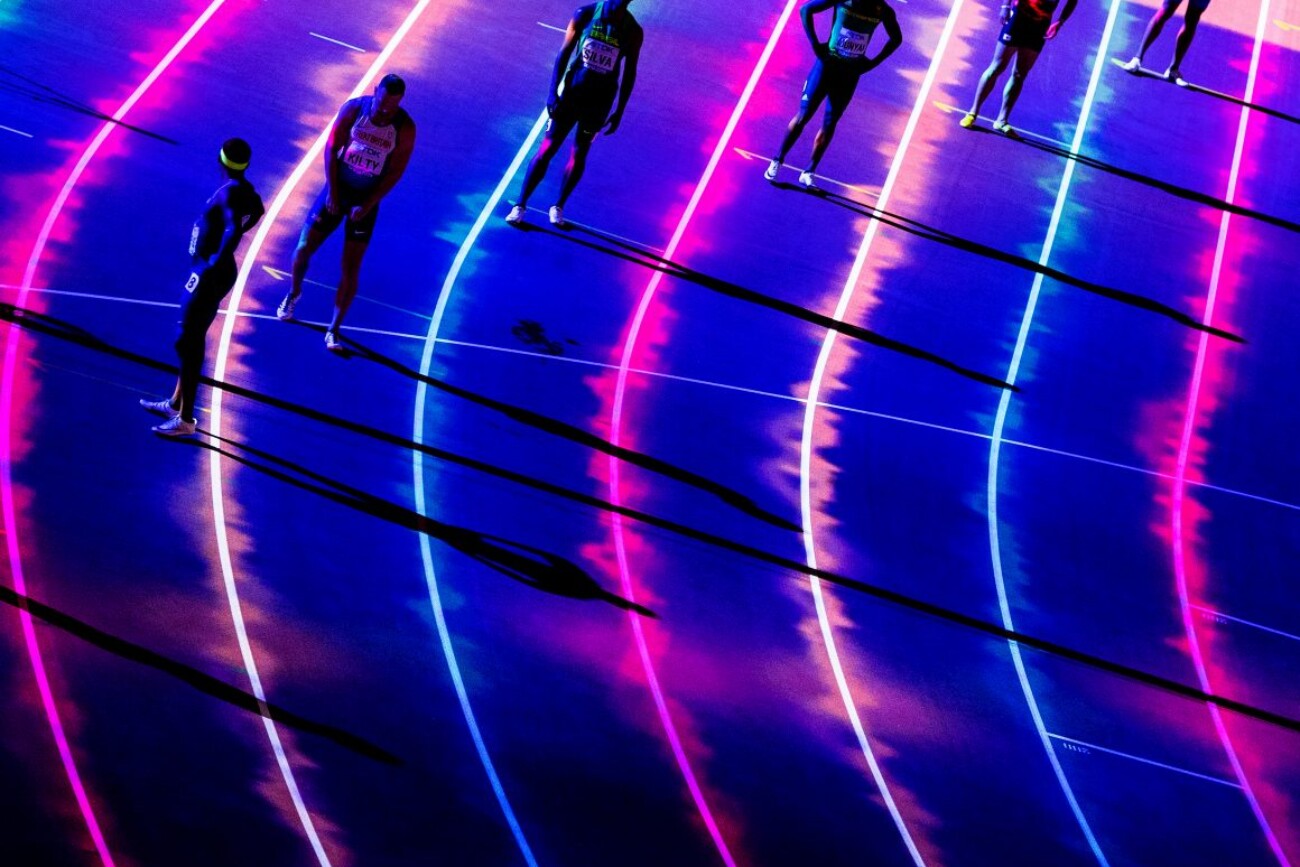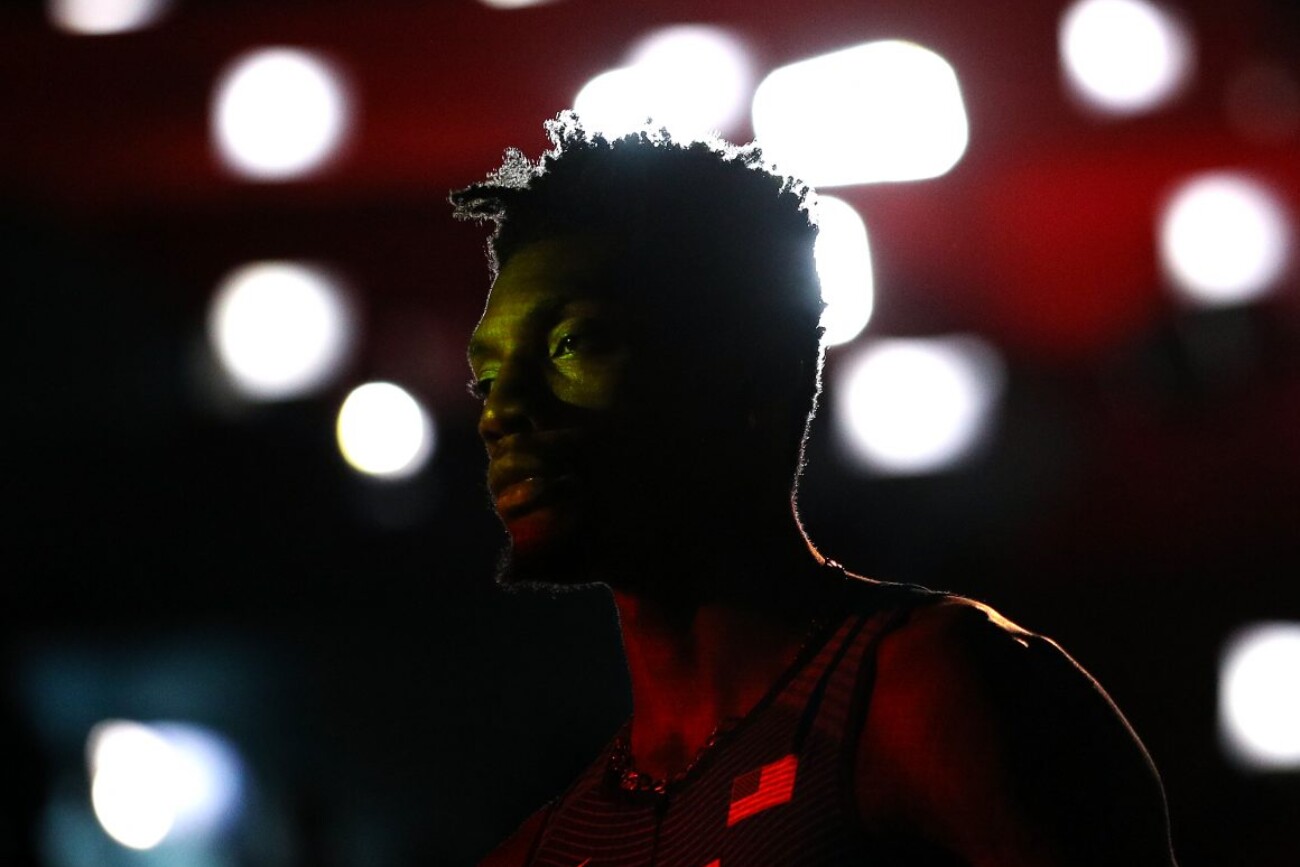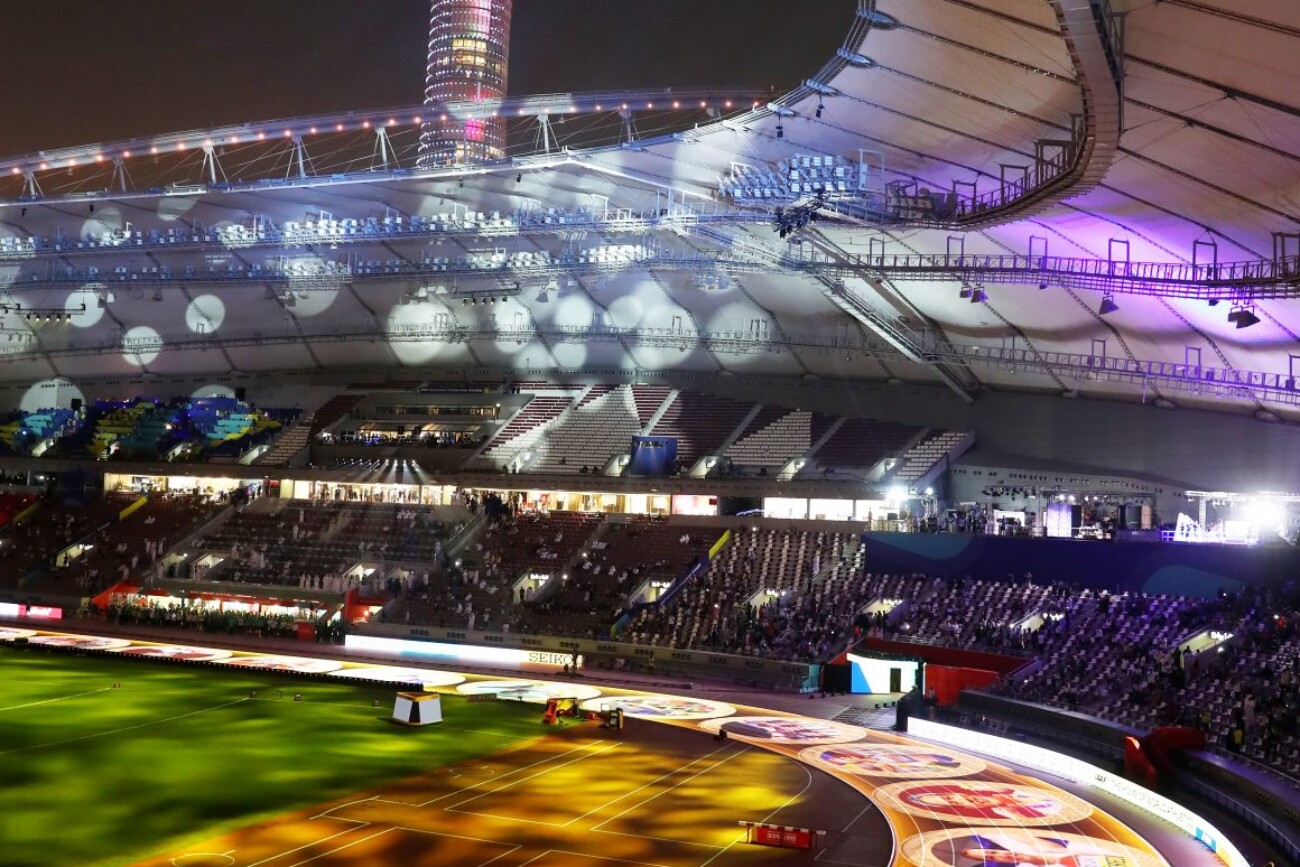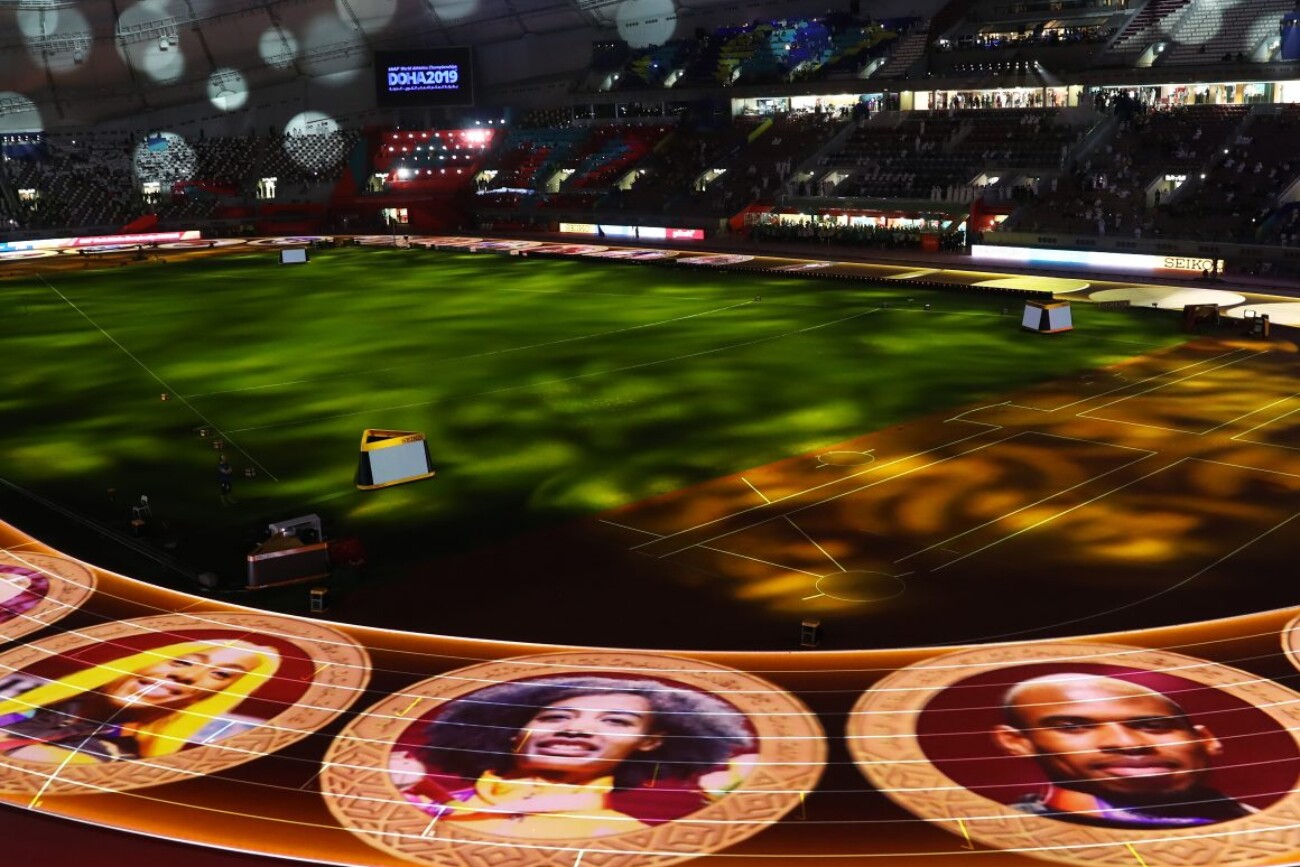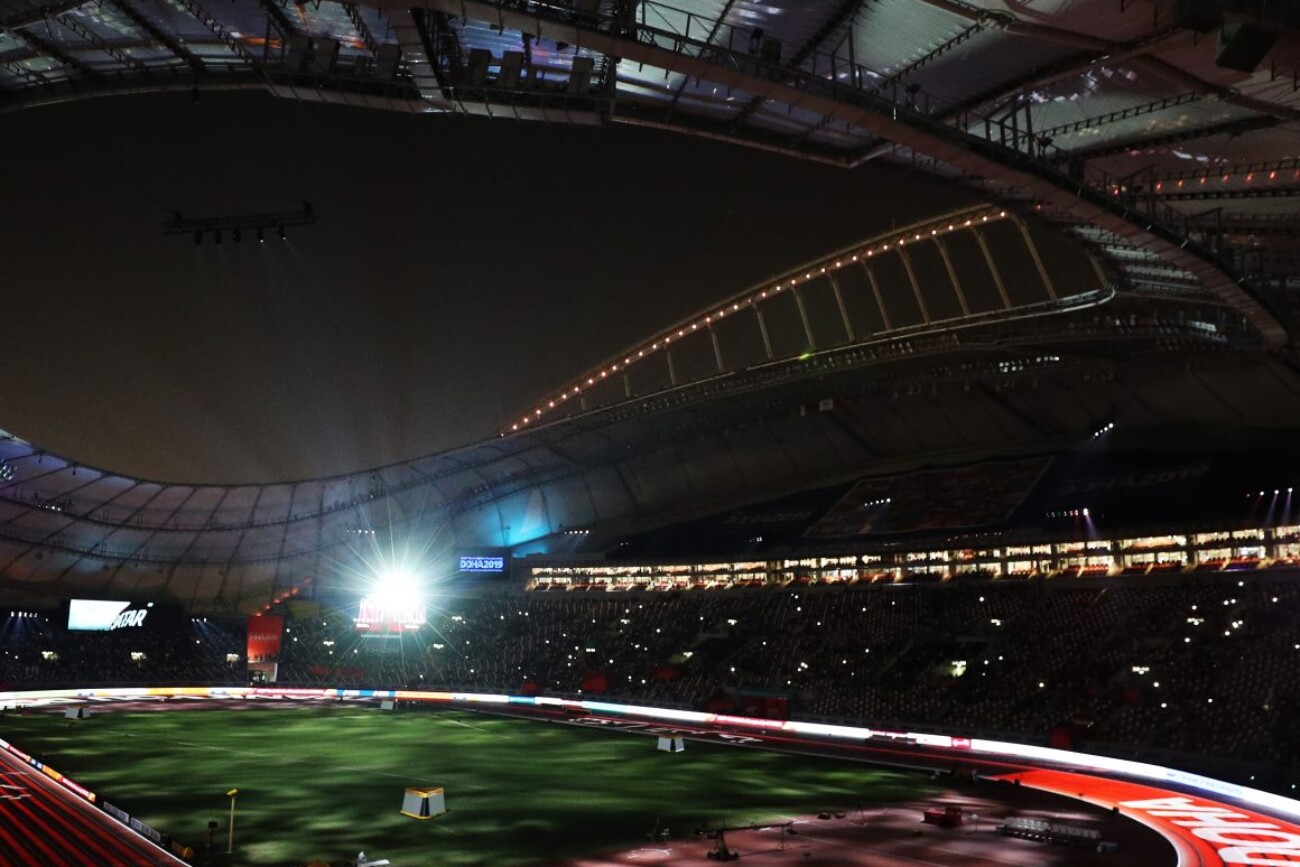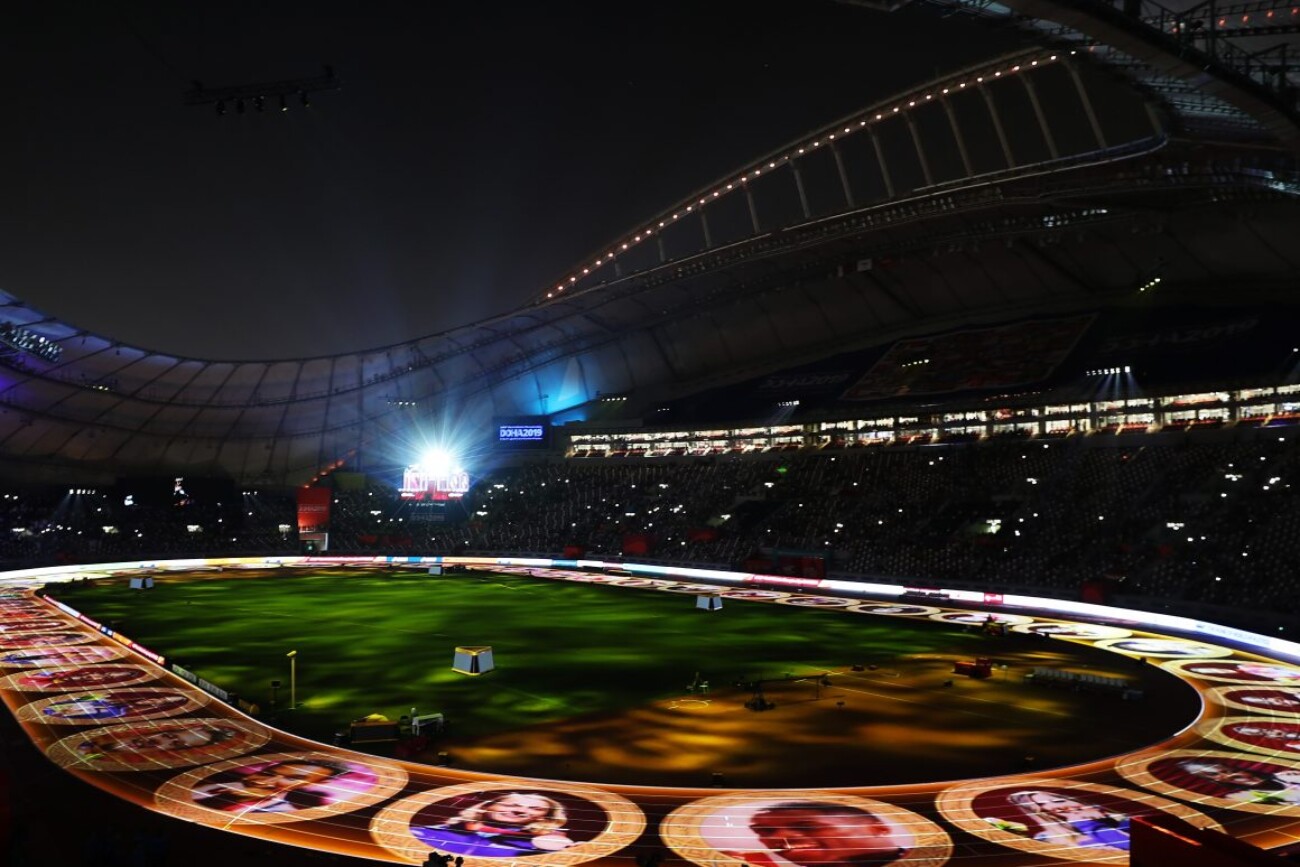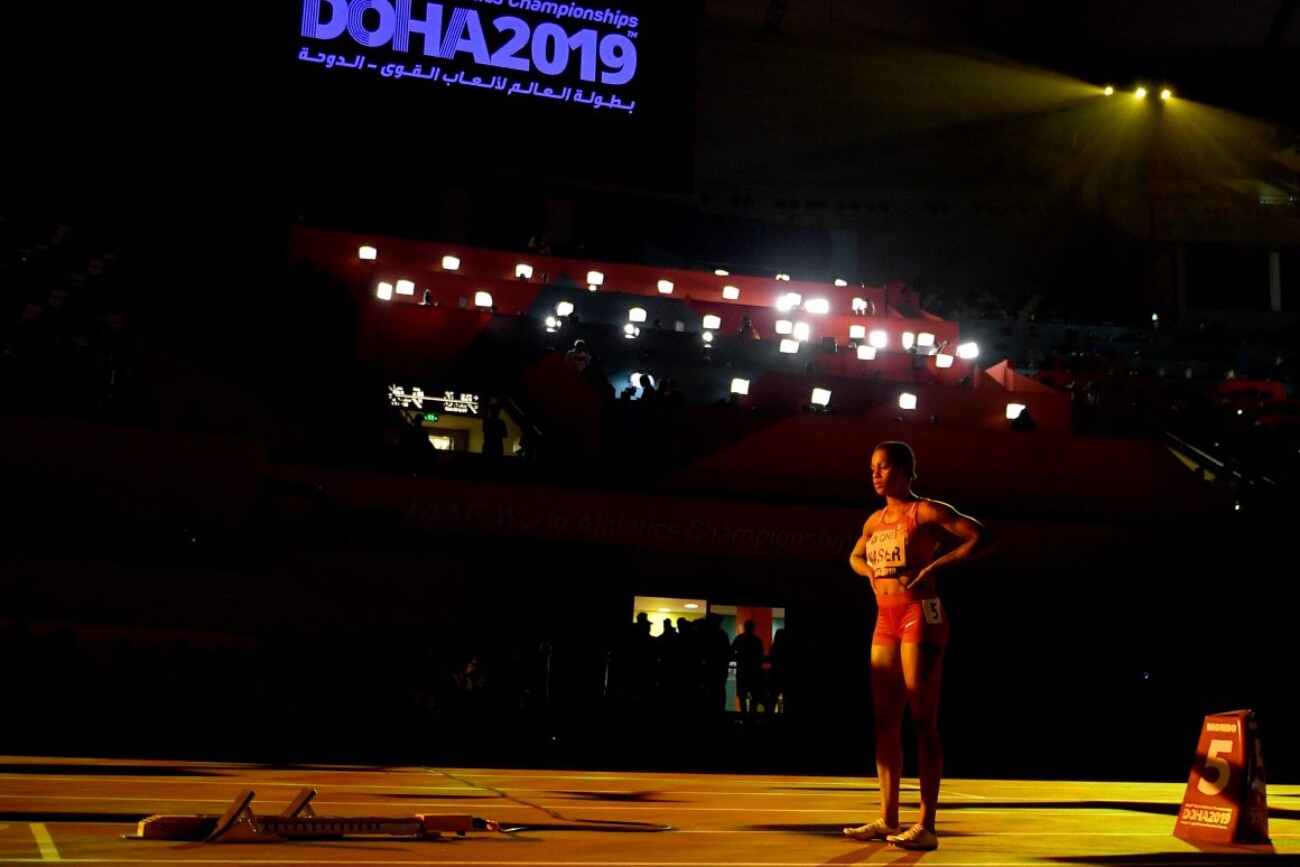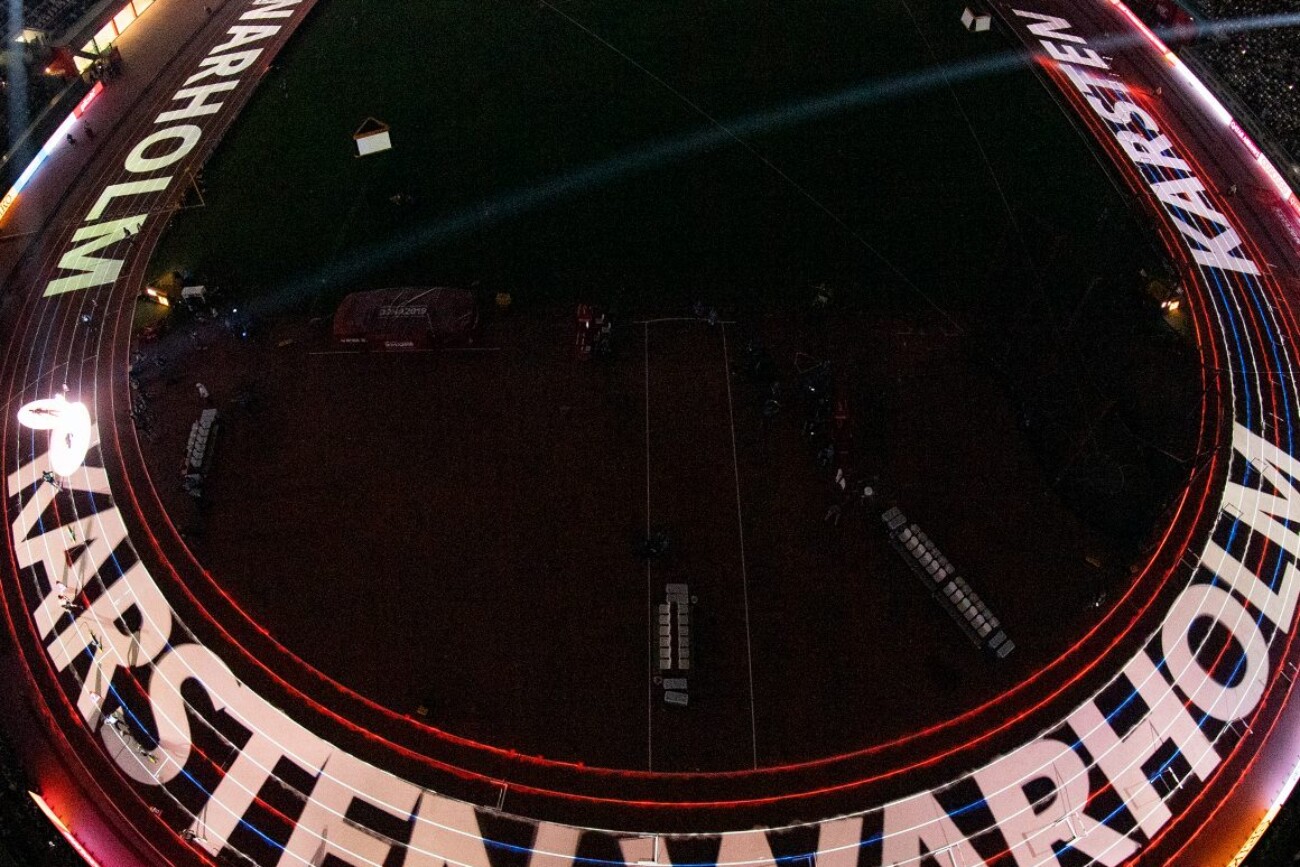PHOTON raises the bar at the 2019 IAAF World Athletics Championship Finals.
The lights dim at Khalifa International Stadium in Doha, Qatar. Suddenly the track is alive, pulsating with electric colour. Flags rise and sink into the ground and athletes’ names appear like magic across the enormous surface. These are the blue ribbons events of the 2019 IAAF World Athletics Championships, a series of sporting finals presented as never before. Behind the projections that brought film-quality special effects to this live event were 98 Panasonic projectors driven by 14 media servers with one hard-working multimedia tool that made the planning and execution of the show possible: PHOTON.
In October 2018, a year before the Championships, Creative Technology collaborator Richard Thomas fired up PHOTON on his laptop in Staffordshire, England, to start with a projection study. Most projection equipment would be shipped to Doha from the UK, some 7,000 kilometers away, and not easily replaced, so it was imperative to select the right projectors and lenses the first time.
Article
Richard needed to be sure to reach his 300-lux target on the track, so he used PHOTON’s heat map to know exactly how bright a given area would be and to achieve an even brightness across the surface. He also used PHOTON to ensure that the projection cone was safely above spectators’ heads and advertising LEDs. Its shadow compensation feature came in especially handy after some steps were added from the seating area to the track, something that wasn’t present in the original 3D model of the stadium. Since the stage was illuminated by many projectors that offered wide coverage, Richard was able to use PHOTON’s compensation feature to literally cancel out the shadows cast by the stairs without missing a beat.
Once onsite for the event, the Creative Technology team set up the equipment. Because the track presented one big, flat canvas, Richard decided to use a manual calibration system. “We call it manual calibration,” he explains, “but it’s actually really clever. We put a lot of reflective balls on the track, then I use a total station, which is what’s used in building surveying, and I can mark these balls. Then I can bring it into PHOTON and see them all as dots and project it on the track. It creates a 3D point cloud of these markers and PHOTON does the tricky work. The folks at VYV are geniuses – I call them wizards.”
Some additional PHOTON sorcery helped meet an unexpected challenge. While the stage at Khalifa International Stadium was air conditioned, at night the air conditioning would be turned off to save power. The extreme temperature fluctuations caused the metalwork supporting the projectors to deform every night. To compensate, the Creative Technology team daily used the Mesh-warping and Twister features, taking a little point in PHOTON, grabbing it, and moving it to where it needed to go to be ready for the evening’s finals. Luckily, even when testing was not an option, PHOTON’s visualizer made it possible to project reliable content.
Creative Director
Rob Currie (Visual Edge)
Visual Content
Andy Talpin & Nick Clarke-Lowes (Visual Edge)
PHOTON Show Operator
Richard Kenyon
PHOTON Engineer
Tom Burford (Creative Techology), Richard Thomas
Production Company
Creative Technology
Production Manager
Matt Hartfree (Creative Technology)
Projectionists
Andy Murrell, Andy Hayes, Pedro Fonseca & Matt Mark
Lighting Designer
Vince Foster

